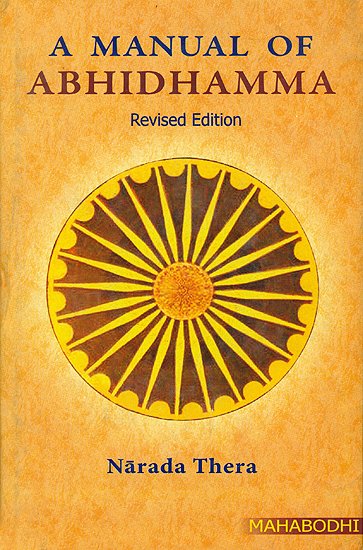Abhidhamma in Daily Life (by Ashin Janakabhivamsa)
by Ashin Janakabhivamsa | 66,666 words
English translation of "Abhidhamma in Daily Life" by Professor Ko Lay. Revised by Sayadaw U Silananda, International Theravada Buddhist Missionary University, Yangon, 1999...
Part 2 - The Three Causes Of Patisandhi
Living beings born out of samsedaja and opapatika patisandhi have no parents at all. They are born only out of the power of their own kamma. For gabbhaseyyaka beings, who are born only after being conceived in the mother’s womb, a question arises: “How does conception take place?”
The three necessary conditions for conception are (a) the mother-to-be must had menstruation just recently, (b) there must be sexual union and (c) the child-to-be must have died in his previous existence.
Pregnancy usually takes place within seven or fifteen days of sexual union between parents.
Some Strange Cases
Although there is no sexual union between parents, there can be pregnancy in some strange cases. The Bodhisattva Suvannasama takes patisandhi in his mother’s womb when his father caressed her navel with his palm just after her menstruation. The mother of King Chandhapajjota felt sensual pleasure when a centipede crept across her belly just after menstruation and later she was pregnant. A pond heron or bittern, feeling pleasure from southern breeze at the beginning of monsoon, becomes pregnant. In the time of Buddha a Bhikkhuní became pregnant when she swallowed the semen from her own ex-husband monk’s robe. After drinking urine containing the semen of a hermit, a doe got pregnant and gave birth to a son Issisingha. There are some exceptionally singular cases of pregnancy.
The Clear Kalala Fluid
With the occurrence of patisandhi citta and corresponding cetasikas, there comes into being a minute matter called kalala-rupa in the form of a clear fluid. This matter takes the form of a droplet the size of a drop of oil clinging to the trip of a hair of a damsel from the Northern Continent. This kalala droplet (the very first stage of formulation of fetus) is formed by the kammic forces of past deeds. It is neither semen nor ovule of his parents, they are supporting agents of this kalala.
The Support Of Semen And Ovule
A kalala droplet is produced by produced by a child’s past kamma but parents' semen and ovule are essential supports for pregnancy to take place. The kalala droplet is like the seed; semen and ovule are like the moist sail or swamp; past kamma is like the farmer. Therefore a clean ovary and healthy semen and ovule are essential. Otherwise the fetus cannot develop into a healthy baby.
Reptiles, especially iguanas living in red-soil burrows are red and those in block-soil burrows are black. In like manner, a baby inherits the genetic features of parents transmitted through the semen and ovule on which the fetus relies for full development; hence the resemblance between off spring and parent. Even mentalities and character including intelligence can be handed over to the child.
These similarities or resemblance are due to genetic transfer during the fetal stage. And another reason is that the child, being brought up in the same family environment, emulates the behavior, mentality and style of the parents. So good, civilized children are born of worthy and virtuous families while villainous children come from vile and depraved families. Therefore both parents to be of virtuous blood for the child to be worthy one. The kalala droplet which is cultured in pure healthy semen and ovule will produce the best off spring.
